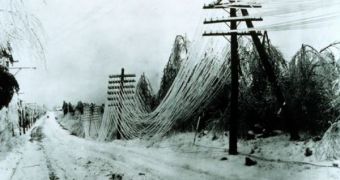A new scientific study showed on Wednesday that global warming and climate change play a major part in triggering an increase in the frequency of arctic storms in the regions surrounding the North Pole, a phenomenon that may have severe repercussions on the way oil and natural gas exploitations in the area function, as well as on the various shipping lanes that cross these treacherous waters.
"Large increases in the potential for extreme weather events were found along the entire southern rim of the Arctic Ocean, including the Barents, Bering and Beaufort Seas," reads the new study, by researchers in Norway and the UK. "The bad news is that as the sea ice retreats you open up a lot of new areas to this kind of extreme weather," says Bjerknes Center for Climate Change researcher Erik Kolstad, the Norwegian co-author of the paper.
Large open stretches of water cause intense and severe storms, and have the potential to trigger the formation of hurricane-intensity winds. These winds could prompt a change in the way glaciers drift in the open seas, and pose a hazard to ship sailing in the area. Fisheries will also be affected by these changes, as gusts of wind are able to destroy the nets, and let the livestock loose in the open waters. A decrease in the fish supply would have massive consequences on populations living in areas around the Arctic, including Canada and the US, Northern Europe and the Russian Federation.
On the bright side of things, if storms begin heading northwards, the central part of Europe could benefit a great deal, with people living on coastlines being spared the full force of future hurricanes. The downside is that the level of ice in the Arctic will continue to decline, even though the record low was achieved in 2007, and a slightly reduced meltdown was recorded in 2008. Unfortunately, trends have to be analyzed over decades, not years, and we are now in full glacier meltdown.

 14 DAY TRIAL //
14 DAY TRIAL //